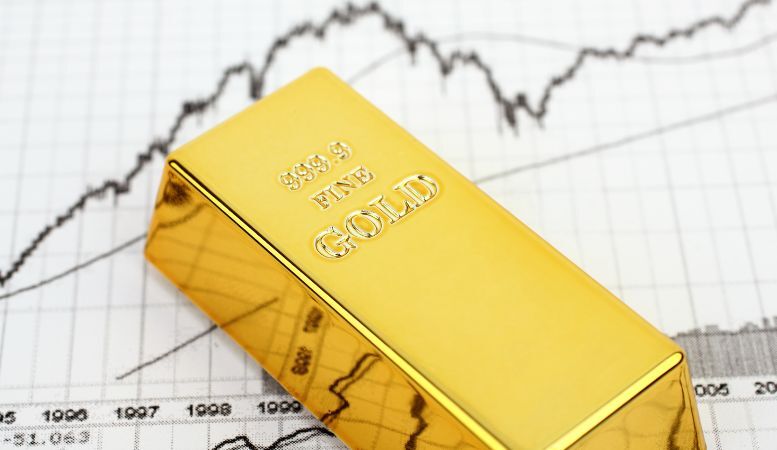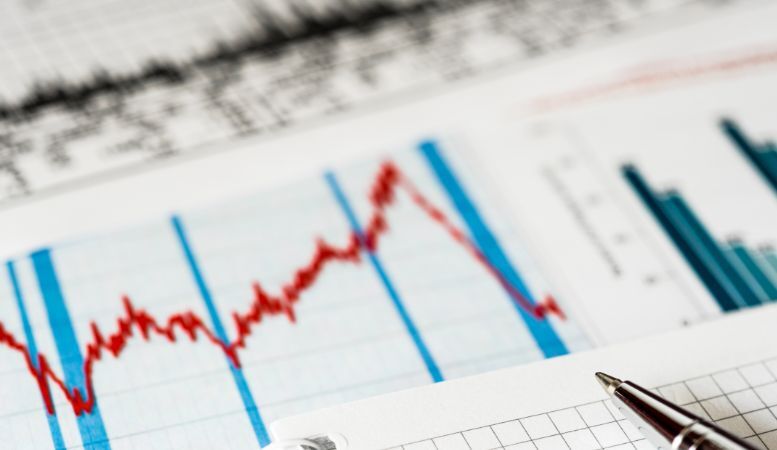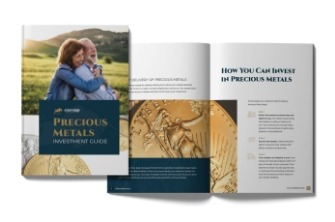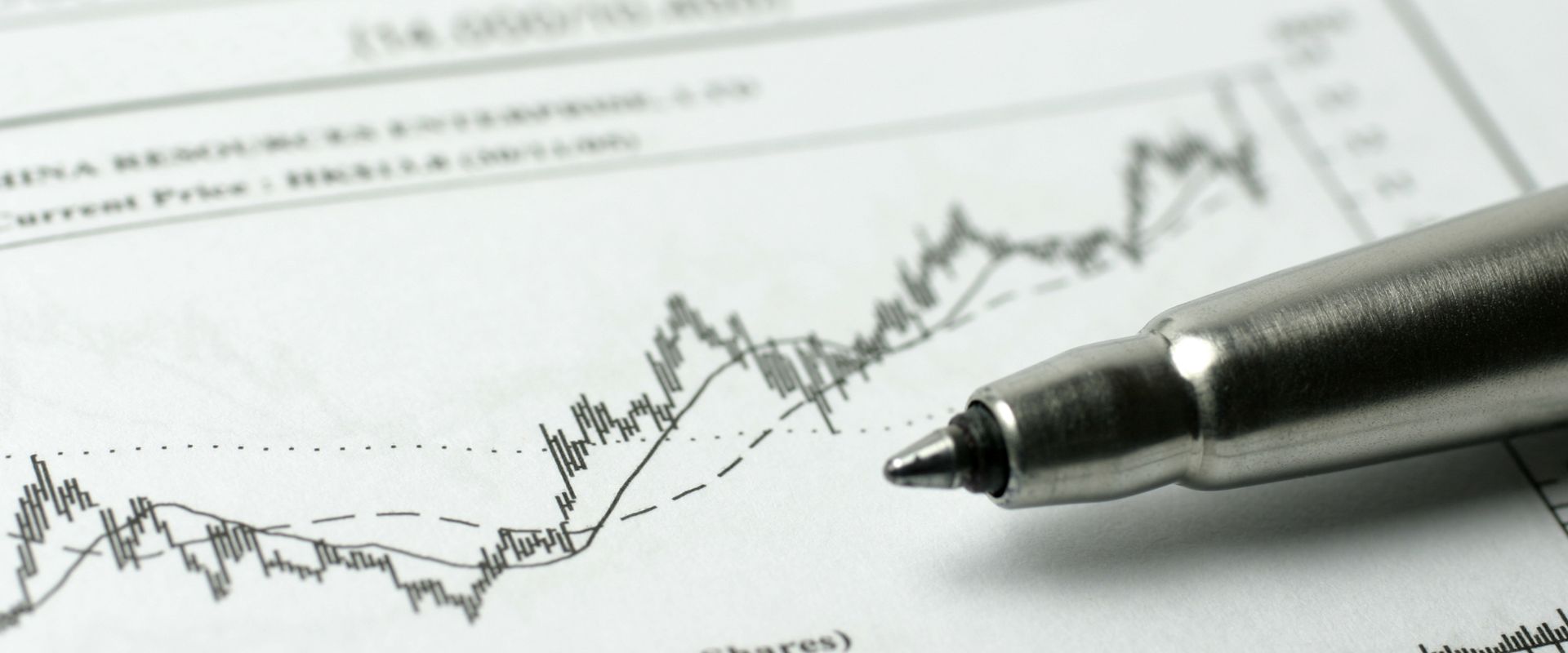Table of Contents
It may be hard to keep history from repeating itself, but it certainly helps to learn from it. Let’s look back at the impact of gold prices during the Great Depression and how gold’s performance back then set the standard for how modern investors view precious metals today. This guide will explore how the price of gold fluctuated during the Depression, the measures taken to improve the economy, and how this tumultuous time in American history set a precedent for investing in gold today.
The Stock Market Crash of 1929
On October 28, 1929, the Dow Jones Industrial Average fell 13% after years of booming business. The following day, the market dropped an additional 12%, and within a few weeks, the Dow had lost nearly half of its value. This kicked off the most devastating financial crisis in our country’s history — the Great Depression.
Plunging stocks and a lack of confidence in American markets represented a major shift from much of the prior decade. Until the crash of 1929, the economy had been booming as consumers took out loans that fed equity markets. This period of optimism also featured the expansion of various industries, including brokerage houses.
While the market’s downfall ushered in the Great Depression, consumers scrambled to find another way to hold up the value of their paper money and put it toward gold. The precious metal prospered through the years and offered hope for those who invested in it. The performance of gold during the Great Depression continues to be a talking point among investment experts navigating today’s economy.
Fluctuations in the Price of Gold

Charts displaying gold prices during the Great Depression clearly show fluctuations. The government had a hand in this since the price of gold was fixed at $20.69 per ounce before they raised it to $34.69 per ounce. Once the country had fully recovered from the Depression, gold prices continued to fluctuate according to geopolitical and economic uncertainty.
These price fluctuations were evident in the aftermath of the 2008 financial crisis and as recently as 2020, when the COVID-19 pandemic took its toll on the economy. A global example of this is Great Britain’s notorious Brexit vote in 2016. Investors panicked after the country agreed to leave the European Union and gold prices increased.
Gold as a Safe Haven Investment
Gold is typically seen as a safe haven investment during periods of economic instability. Experts point to gold prices during the Great Depression and similar downturns in support of this view. Overall, gold tends to perform well when the economy is otherwise unreliable and is far less risky than investing in more volatile markets, like stocks or real estate.
The general consensus among investment experts is that gold is a hedge against inflation, is a reliable store of value, and protects people from financial losses. Not only does gold diversify a portfolio, but it also aids in preserving wealth, particularly in the long term.
Government Policies to Stabilize the Economy

As the economy continued to flounder, the government had to step in and establish policies to stabilize it. Among the most notable pieces of legislation is the Glass-Steagall Act of 1933, which created the Federal Deposit Insurance Corporation (FDIC). This act helped protect consumers from potential losses by restricting commercial banks from risky investment activities.
Another policy that came out of this period was the Securities Exchange Act of 1934. This legislation targeted fraud and manipulation of secondary markets, so there would be more financial transparency. Congress also focused on some of the nation’s biggest electric companies with the Public Utility Holding Company Act of 1935 to minimize catastrophic damage due to the failure of one electric supplier.
One of the most influential policies that directly impacted the price of gold was the Gold Reserve Act of 1934. This controversial piece of legislation saw all monetary gold in the U.S. transfer ownership from institutions and individuals to the U.S. Treasury. The government could regulate gold and its value upon President Franklin D. Roosevelt’s signing of this act.
Abandonment of the Gold Standard
In the early 20th century, global economists utilized a concept known as the gold standard, which valued a country’s currency as a fixed amount of gold. This practice was widely used throughout industrial countries from 1871 to 1914, though World War I paused the standard.
It was ultimately abandoned at the onset of the Great Depression, and some experts suggest that the efforts to maintain this practice actually worsened the country’s economy. The main argument for this is that the gold standard restricted central banks from responding to such dire economic conditions as they would today. For example, instead of cutting interest rates to give the economy a boost, central banks like the Federal Reserve could only focus on keeping their currency tied to gold.
After the gold standard was abandoned by the U.S., the economy was slowly able to grow again since the total gold reserves had built up. The government had raised the price of gold to $35 per ounce, and given the worth of their stockpiles, the Federal Reserve could start producing more paper money. This was a stepping stone toward reviving the economy, though the impact of the Great Depression was still widely felt.
Impact of the Depression on Consumer Spending

The Great Depression put an abrupt halt to the consumer spending that had taken up so much of the 1920s. The sudden stock market crash and massive bank failures led to the unemployment of 15 million Americans and a spike in homelessness. Since millions saw their income and assets suffer, demand for products plummeted along with spending.
Certain goods and industries suffered more, with agriculture, in particular, contributing to a shift in consumer spending. Although people still needed to eat, farmers’ crops couldn’t grow because of excessive droughts. They ultimately left their dying farms for cities to find work.
The sudden change in the economy left fewer Americans with disposable income and, therefore, unable to purchase certain products. According to the Library of Congress, consumer spending in 1929 was $77.5 billion, while that figure drastically fell to just $45.9 in 1933. Rather than buying goods with credits and paying through installments, people focused on paying off their existing debts, leaving little room for additional spending.
Role of Gold as an Economic Indicator
Investment experts and economists tie the gold market to the overall economy. It’s often seen as a reliable hedge against inflation and tends to increase in price during recessions as investors lose confidence in the stock market. Generally, gold is a solid economic indicator that investors use to protect themselves from financial loss.
A dip in gold prices typically indicates that the economy and value of the dollar are strong and stable. On the other hand, increasing prices tend to signal a shaky economy where the stock market may be underperforming and the U.S. dollar weakens.
Gold’s Continued Significance in the Global Economy Today

While much has changed since the Great Depression, gold remains a steady influence on how people navigate the economy. Recent rises in inflation have seen the price of gold steadily climb while the Federal Reserve continues to raise interest rates to stabilize inflation figures.
Any time the value of the dollar weakens, investors purchase gold since they can get a better return for it. This practice increases the overall demand for gold, which also contributes to price hikes. Having a better understanding of the trajectory of gold prices throughout several points in history and the current economy can help with your investment journey.
FAQs
Read on below for quick answers to some of the most common questions many ask about gold prices during the Great Depression and their effects on today’s economy.
Did People Invest in Gold During the Great Depression?
Many struggling Americans chose to move their paper investments into physical gold since bank failures led to people losing confidence in our currency. Since the gold standard pegged a currency’s value to the price of gold, people rushed to stockpile gold rather than paper money.
Does Gold Go Up or Down in a Recession?
Considerable research shows that gold performs fairly well during a recession, which is why many investors view it as a safe haven option. People believe gold is a less risky investment compared to the stock market, especially during periods of volatility, which increases the precious metal’s demand and, by extension, its price per ounce.
Why Has the Gold Standard Been Blamed for the Great Depression?
The gold standard often takes the blame for the Great Depression because Americans started to hoard gold to benefit from its ties to the country’s currency value. Hoarding precious metals did not help conditions, and the government had to abandon the gold standard to promote economic growth.
How Much Was Gold Worth in 1929?
According to data from Macrotrends, gold was valued at $20.63 per ounce in 1929. This represents the start of the Great Depression. However, the price of gold climbed to $34.69 per ounce after the government raised the fixed rate in an effort to stabilize the economy.
Now that you understand more of the history behind gold prices during the Great Depression, it’s easier to see why people invest in gold as a hedge against economic downturns. The experts at Oxford Gold Group can help if you want to add gold to your portfolio and protect yourself from volatile markets. We have the resources to help you purchase reputable gold products or open a gold IRA for long-term wealth preservation.








